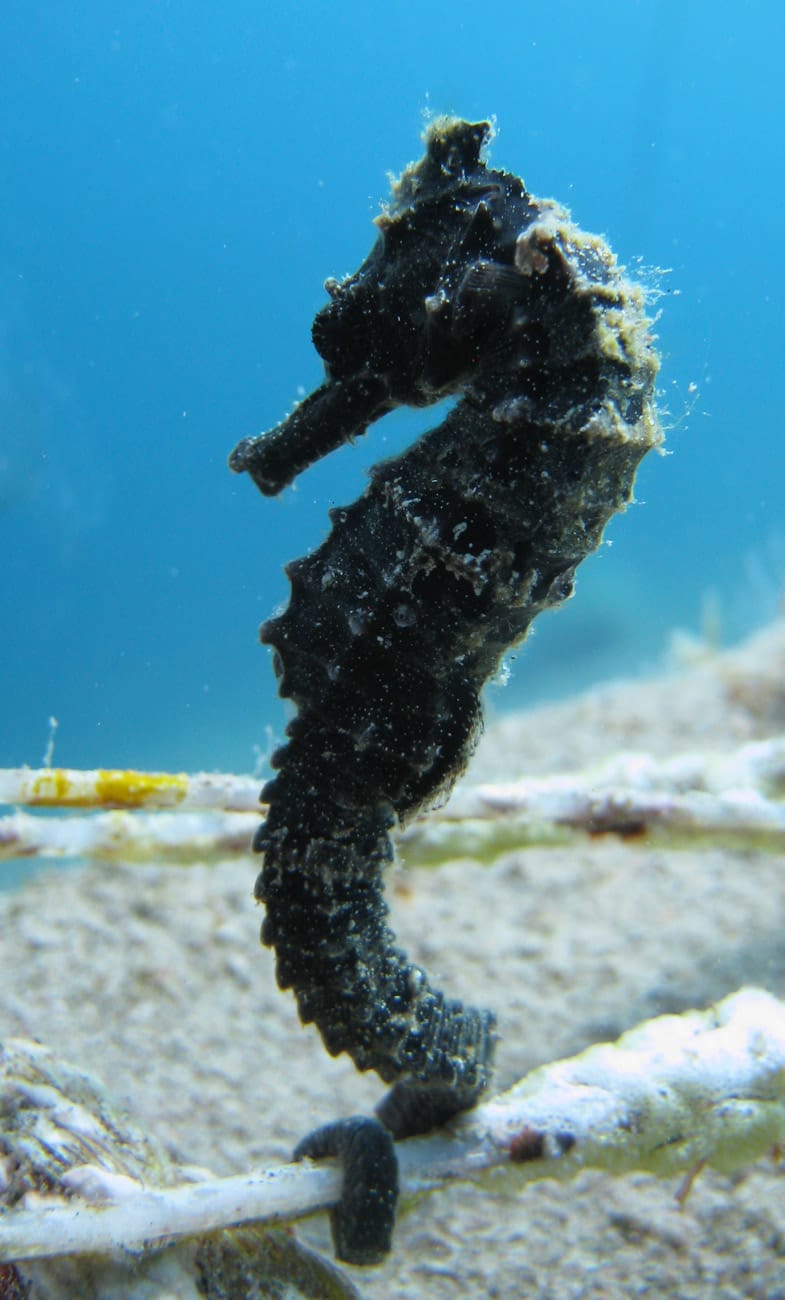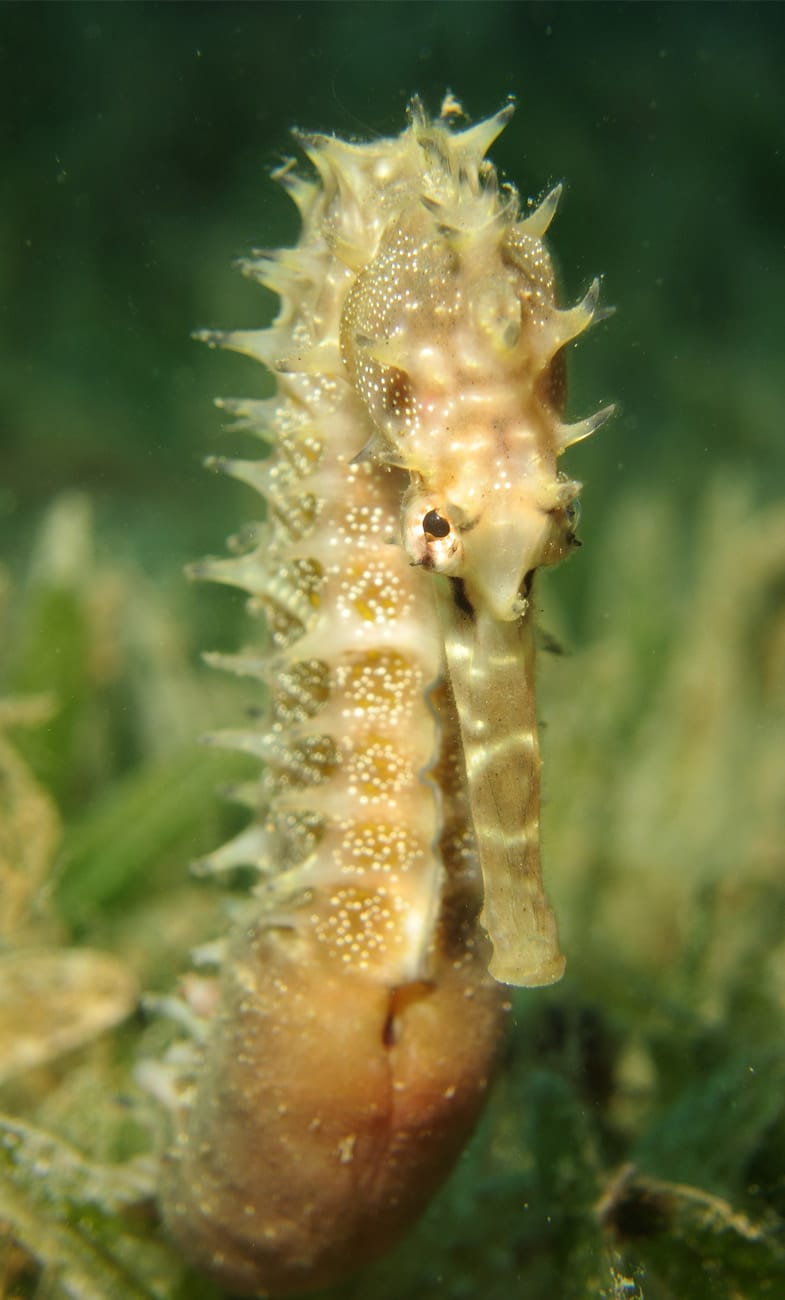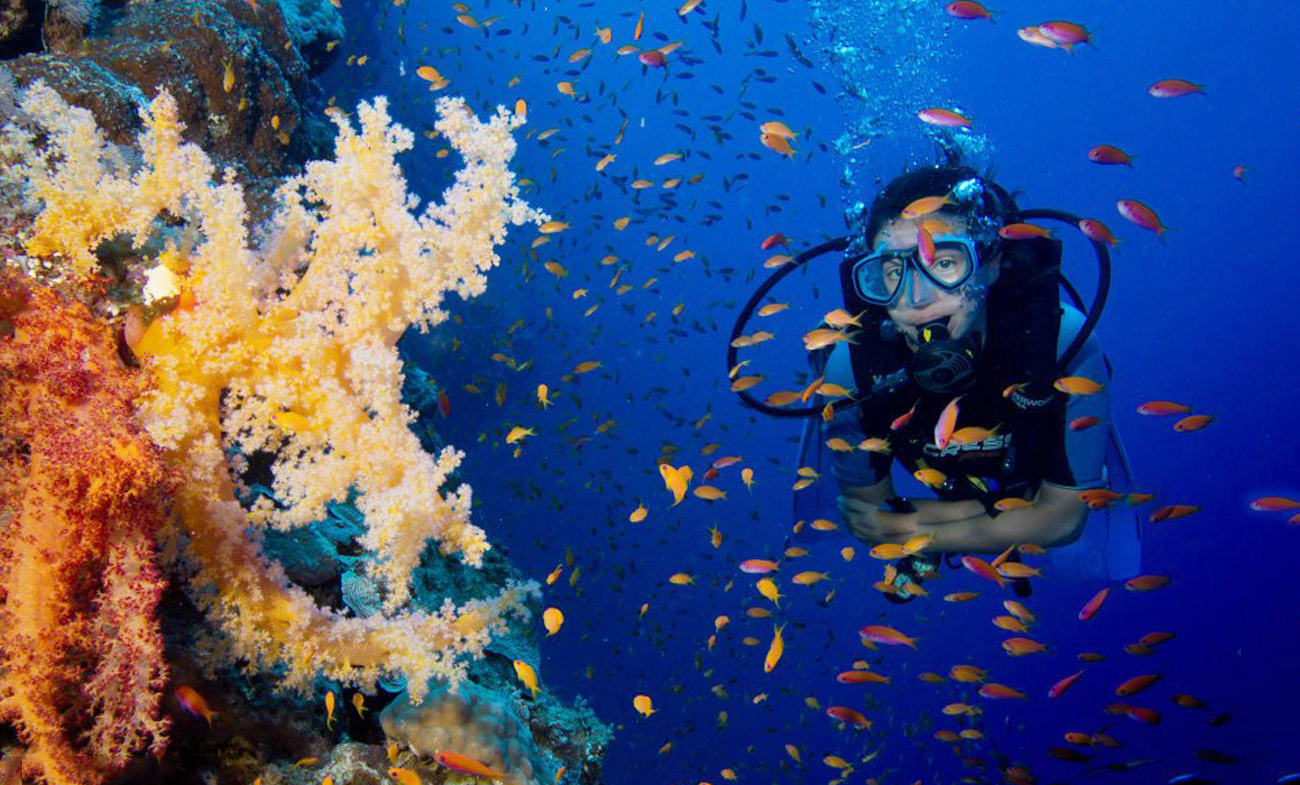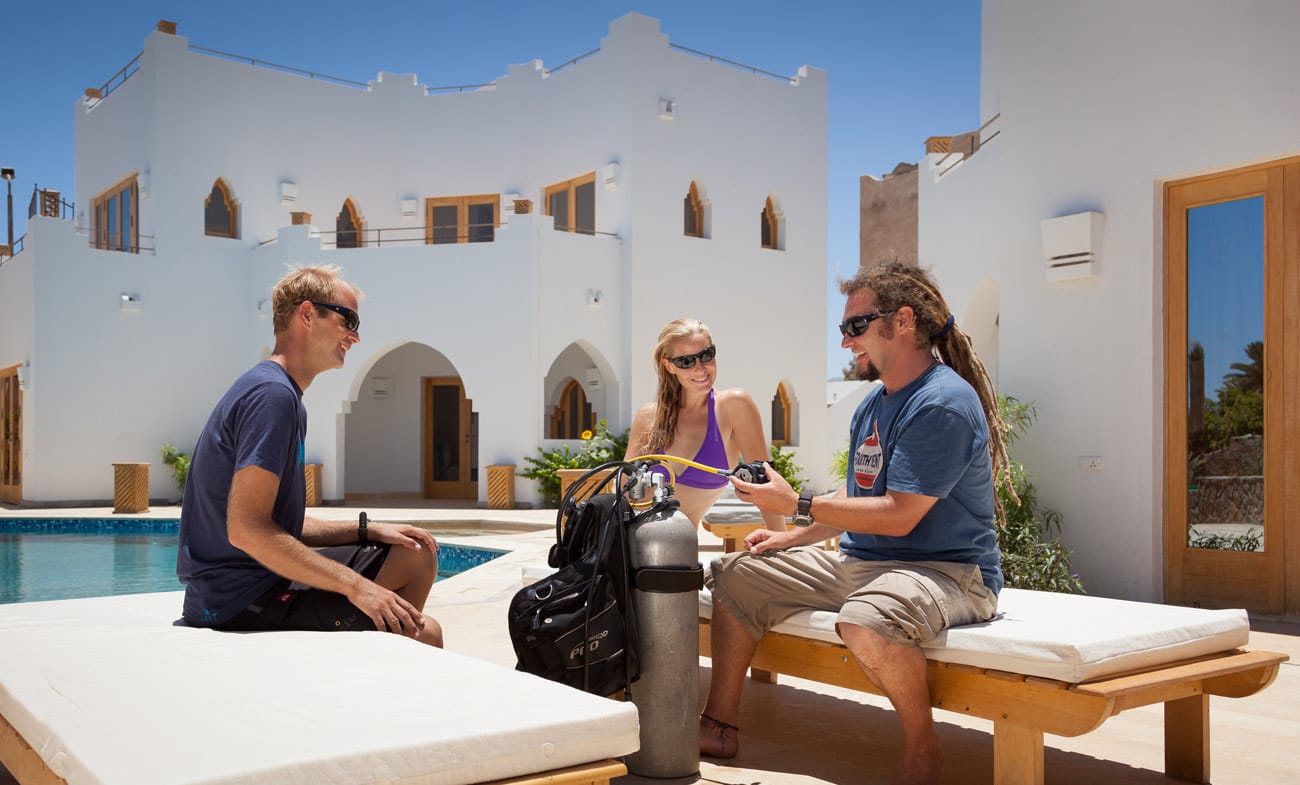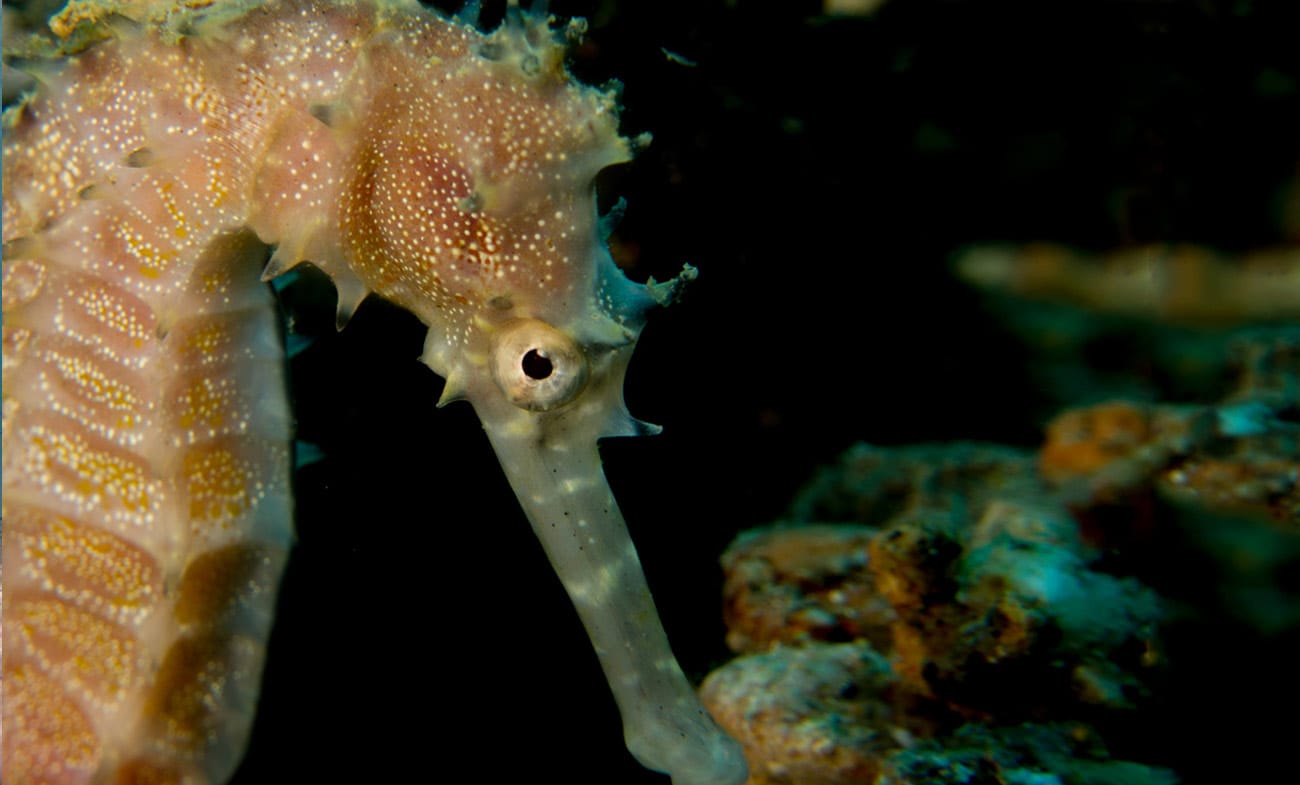
H2O Creatures: Seahorses
Hippocampus comes from the ‘hippos’ Greek meaning horse and ‘kampos’ meaning sea monster.
We’re lucky here at H2O Divers, our house reef – Bannerfish Bay is home to Hippocampus jayakarai, more commonly known as Thorny seahorse.
Seahorses are actually fish: they live in water, breathe through gills and they have a swim bladder. Unlike a ‘regular’ shaped fish, they do not have rear-fins and instead, have a longer tail. Unlike most fish however, seahorses have an exo-skeleton meaning that their bodies have hard, external, bony plates that are fused together with a fleshing covering.
Also they do not have scales like most fish do. Equally they are poor swimmers; they rely on their dorsal fin beating ridiculously but necessarily fast: 30-70 times per second to propel them along. Their pectoral fins either side of their head work as their steering wheel keeping them balanced. However, this fine movement allows them to sneak up on their prey pretty much undetected making them an awesome stealthy predator with 90% accuracy.
Seahorses like to live in shallow weedy areas so a sea grass-heavy site like Bannerfish Bay – Mashraba is perfect. They can also camouflage themselves in the grass as their bodies have appendages called ‘cirri’ on them making them look weedy, for want of a better description.
Also they can grip the sea grass with their tails so it’s perfect for them. Males and females have different territory zones: males only wander 0.5msq whilst females like to look about more, three times as much in fact as their territory zone is at 1.4msq and their territories overlap.
Rather sweetly, they mate for life and still have a morning romantic moment – not what you’re thinking 
They like to eat small crustaceans such as Mysis Shrimp and with their vacuum cleaner like snout, they suck up their food and said snout is able to search around in nooks and crannies looking for food.
Probably the most common fact that people know about seahorses is the reverse-role situation: the males have a full on pregnancy. The female gives her eggs to the male and rather boringly for him; he self-fertilises them in his pouch. The quantity of eggs being transferred depends on the species, it can range from 50-150 for smaller species and up to 1500 for larger species. The male provides the eggs with oxygen and food from anything to 14 days to 4 weeks until birth occurs. The birth can be quite a long process (well I guess it would be if you’re popping out at least 50 babies!) and contractions can last 12 hours. Be honest, how many women reading that last sentence and have given birth smiled a little at the thought of that man going through that?!
Baby seahorses, are called fry, and have a pretty rubbish chance of making it to adulthood: less than one in a thousand will avoid predation long enough to reach maturity. As soon as they are born, it’s every man for himself. They spend the first two to three weeks drifting about in the plankton layer of the sea trying, generally unsuccessfully, not to be eaten. It’s actually when they’re adults they’re safer from natural predators, until you factor in the human aspect of it.
When I was diving in Indonesia, we had the opportunity to see pygmy seahorses and this will sound stupid, but I really didn’t realise how small they are! My camera wouldn’t even focus on it in macro mode. Also, they are damn near impossible to spot due to their minute size – think finger nail. To be fair we could have them here in Dahab but we’ve swam passed them
Seahorses do have natural predators of course: crabs, fish and rays. However lest we forget about the human impact – 150million… yep, that’s million – seahorses per year get taken by the Traditional Chinese Medicine Trade from the wild. The Curio Trade takes about a million from the wild per annum and they are used like shells and starfish: for souvenirs. For this to happen, they are left to die under the sun so they can dry out and look all “pretty” for people to then take home and put them in their bathrooms. Bizarrely, the pet trade takes approximately another million seahorses from the wild and it is thought that less than 1,000 are able to survive… for less than six weeks. A rather pointless exercise I find. They’re at serious risk of extinction. So on that depressing note I will leave you, but here’s some cheerful pictures of alive and well seahorses in Bannerfish Bay




